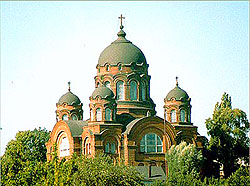About Kharkov
 Upcoming Tour:
Upcoming Tour:
on hold until further notice
Kharkov is a capital of Kharkov Region and the second largest city of Ukraine. It is situated at the junction of the Kharkov, Lopan, and Udy rivers. Today it occupies more than 300,000 square kilometers and has the population over 2,000,000 people. The city is known for its heavy machine-building, chemical and pharmaceutical plants.
Kharkov (also called Kharkov) is located near the rich coalmines of the Donets Basin and is linked by railroad to the iron ore deposits of Krivoy Rog. Kharkov is the largest industrial, scientific and cultural center of the country. Manufactures include farm and mining machinery, electric and railroad equipment, chemicals, machine tools, and processed food. It is a city of broad avenues and large buildings.
Kharkov was founded in 1656 as a fortress protecting Moscow from the Tatars. The city grew as a trade and cultural center, and in 1765 it became the administrative center of Ukraine. With the development of the vast mineral wealth of the region in the late 19th century, Kharkov developed into an industrial and rail transportation center. During World War I Kharkov was the scene of heavy fighting, first between German and Russian troops and later (1917-20) between opposing forces in the Russian Revolution. It was the capital of the Ukrainian Soviet Socialist Republic from 1920 to 1934. During World War II Kharkov was occupied (1941-43) by German troops and suffered severe damage.
Among the places to see would be Pokrovskiy Cathedral (late 17th century), Uspenskiy Cathedral (18th century), Patriarch's Church (19th century), and The Bell Tower (1812) built to commemorate victory over Napoleon.
|
